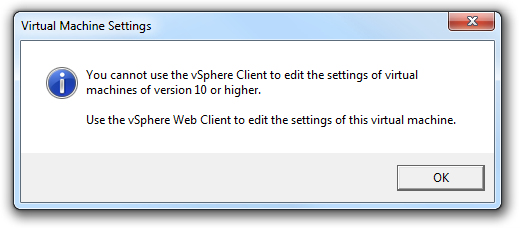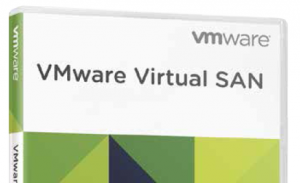vSphere 5.5 U2 C# Client can now edit Hardware Version 10 VMs
Slightly hidden in vSphere 5.5 Update 2 there is a new vSphere C# Client that can edit Virtual Machines running the latest Virtual Hardware (vmx-10). Instead of getting an error message when trying to edit Virtual Machines with Hardware Version 10 you can now reconfigure these machines with the legacy C# client. Understandably you can only edit pre-5.1 features. All 5.1/5.5 features are still only available with the vSphere Web Client.
With the vSphere Client you would usually see the following error message:
Read More »vSphere 5.5 U2 C# Client can now edit Hardware Version 10 VMs



